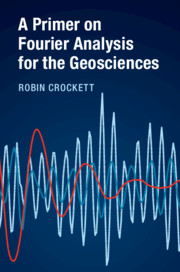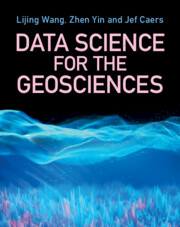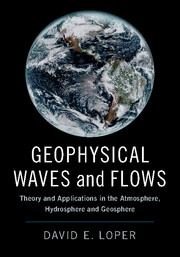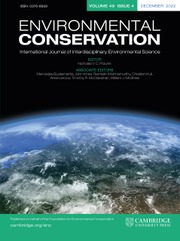A Primer on Fourier Analysis for the Geosciences
Time-series analysis is used to identify and quantify periodic features in datasets and has many applications across the geosciences, from analysing weather data, to solid-Earth geophysical modelling. This intuitive introduction provides a practical 'how-to' guide to basic Fourier theory, with a particular focus on Earth system applications. The book starts with a discussion of statistical correlation, before introducing Fourier series and building to the fast Fourier transform (FFT) and related periodogram techniques. The theory is illustrated with numerous worked examples using R datasets, from Milankovitch orbital-forcing cycles to tidal harmonics and exoplanet orbital periods. These examples highlight the key concepts and encourage readers to investigate more advanced time-series techniques. The book concludes with a consideration of statistical effect size and significance. This useful book is ideal for graduate students and researchers in the Earth system sciences who are looking for an accessible introduction to time-series analysis.
- Explains basic Fourier theory in intuitive mathematical terms, making it accessible to those without a strong background in mathematics and statistics
- Outlines methods such as the Lomb–Scargle periodogram technique that can be used for unequal-interval time-series data
- Includes straightforward no-frills R spectrogram code in an appendix to the book (also available online), along with a brief help-file, allowing readers to use the code with their own datasets as well as with the examples provided in the book
Reviews & endorsements
'This textbook is an excellent resource for students and researchers interested in time series and spectral analyses for a variety of geoscience problems, from seismology to climate change. It provides the theory behind these topics, with examples, in a methodical and easy to understand way, combined with ready-to-use computer programs.' Shimon Wdowinski, Florida International University
'This is a perfect book for researchers wanting to know how to perform time series analysis using the Fast Fourier Transform. The examples from Earth sciences and the R codes are especially useful for young scientists and newcomers in the field of time series analysis.' François G. Schmitt, Centre National de la Recherche Scientifique (CNRS), Paris
Product details
No date availableAdobe eBook Reader
9781108676137
0 pages
72 b/w illus.
Table of Contents
- Preface
- Acknowledgments
- 1. What is Fourier analysis
- 2. Covariance-based approaches
- 3. Fourier series
- 4. Fourier transforms
- 5. Using the FFT to identify periodic features in time-series
- 6. constraints on the FFT
- 7. Stationarity and spectrograms
- 8. Noise in time-series
- 9. Periodograms and significance
- Appendix A. DFT matrices and symmetries
- Appendix B. Simple spectrogram code
- Further reading and online resources
- References
- Index.







